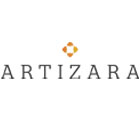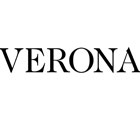Theiss created this book with the help of her team at Human Trafficking Awareness Partnerships (HTAP) as part of its ArtReach program, which used art to educate children on the dangers of human trafficking. In addition to ArtReach, HTAP also has programs for adults.
We want to educate them about human trafficking so their family members by understanding how trafficking works and understanding the signs so that they can be alert to it”, Theiss explains.
Calm Waters
Theiss, a Chicago native, has always been passionate about empowering and educating others. Before she started HTAP, she lived in Louisiana with her husband and two daughters, where she worked as a teacher for 10 years, owned a small international business, translating instructions for knitting and crocheting books and also served as the mayor of Sanibel.
While living in Louisiana, one of her daughters, who was about 4 years old at the time, nearly drowned at a summer camp. Theiss says that while her daughter- who was rescued from the bottom of a pool- was too young to realize the severity of the situation, she and her husband felt it would be beneficial to give her positive experience with water. So, her husband, who had vacationed in Florida as a child, suggested they invest in property in Sanibel- where the waters are “clear and calm”. Eventually, in the late 1990s, they decided to settle on the island full time.
Theiss says she fell in love with the natural beauty of Southwest Florida and decided to get more involved with the community.
One way to go about that was to expand on an international club she was already involved with. “I belong to Zonta International”, Theiss says. “They had a project starting in 2000 on human trafficking prevention”.
Inspired by the project, Theiss, along with some of the other local Zonta members, decided that they should research the issue of human trafficking to see how they could help. They discovered that Southwest Florida is a hotbed for human trafficking.
Murky Water
Upon learning that her paradisiacal home was entangled in such a horrific crime ring, Theiss and her peers wanted to do something about it.
With assistance from the newly elected sheriff- who remains sheriff to this day- they organized a meeting to make a plan of action. More than 80 people attended.
He got a couple of his officers as lead people; we had the state attorney, who had a lot of experience in trafficking because of Immokalee”, she says. “And, someone came in and gave information that led to the arrest of four traffickers… and the rescue of a victim.
According to Theiss, the rescued victim was a 13- year- old girl who spoke neither English nor Spanish, and had been impregnated as well as beaten by her traffickers. After her rescue, the girl was kept in foster care across the street from her traffickers until their arrest. This scenario, Theiss says, is the reason she decided not to focus HTAP’s mission on victim services but, instead, decided to help with education and prevention.
Because that happened, we got a lot of attention, from the federal government, from the local people”, Theiss explains. “we just decided that we would keep learning, go to conferences and get every piece of education that we could and then we would share with other people. … We started out by organizing efforts among coalitions”.
Clearing The Water
In 2006, HTAP was officially born under Theiss’ leadership with the mission of eliminating human trafficking through education.
Now in its 11 year, HTAP also works with other organizations such as Abuse Counselling and Treatment, Inc. (ACT) and the Children’s Advocacy Center of Southwest Florida (CAC).
It seemed important that we educate not only the public, but also the person who are directly involved in dealing with victims and the trafficking”, she says. “There are a lot of other people who need to know: hospital workers, mall security, hotels, restaurants, landscape crews”.
Through HTAP’s program called Tips, Theiss and her team provide a safe, controlled environment for youth age 8 to 18 to experience simulated scenarios of human trafficking. In addition, they provide tips for advoiding traffickers and for parents to protect their children. They also suggest that parents be proactive by talking to their children about sex and the dangers of human trafficking.
ArtReach was inspired by Theiss’ colleague, Dr. Janelle Grant, who was using art to empower and connect Guatemalan women who speak more than 20 indigenous languages. They would create banners to help communicate messages that would otherwise go misunderstood because of language differences. Theiss and her colleague decided to do a similar art-related effort to create awareness about trafficking.
We gathered some kids together, took them to a church, and they made banners (to raise awareness about human trafficking)”, says Theiss, adding that this blossomed into a 12- time- a- year art program, which includes exhibitions of the children’s art at various locations such as the Wells Fargo in Mercato, Naples and the Naples Art Association. “The exhibitions are empowering other people”, she says. Theiss and her team at HTAP have also used the art that comes from ArtReach on brochures and handouts for HTAP and have complied many of them into a book.
Theiss says when she first started, many people didn’t even know human trafficking existed. Through HTAP, awareness is being raised and more people including children, are learning about it. “Together we thought we could teach kids about trafficking”, she says.
Source: humantraffickingawareness.org




